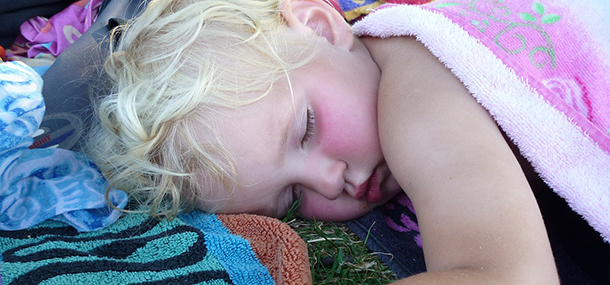
One of the many difficulties with diagnosing sleep breathing disorders is first realizing your child actually has an issue. “My child snores a lot and is sleepy during the day,” or “He’s a very restless sleeper and it may be affecting his behavior.” These are comments that indicate to a physician that a child may have sleep disordered breathing.
Snoring is the most common indication and occurs in a large percentage of children but may underlie a more severe problem of the airway. In fact, the airway may be narrowing or obstructing during sleep. Obstruction of breathing during sleep is much more common than is generally realized, affecting 3/100 children. It can result in daytime sleepiness, behavior problems and, in severe cases, high blood pressure, heart problems and complications of other preexisting illnesses.
Usually, the first line of treatment is an evaluation by an Ear, Nose and Throat (ENT) doctor. If the tonsils and adenoids are enlarged, removal of these tissues is often curative. However, in patients with obesity, asthma, cardiac disease, Down syndrome and other syndromes with face anomalies, the problem is more deeply rooted and treatment often goes beyond a simple tonsillectomy.
Cincinnati Children’s has developed a clinic to treat these more difficult cases with a team approach. The Complex Obstructive Sleep Apnea Center team consists of doctors from Pulmonary Medicine and Ear Nose Throat, genetics, facial plastic surgery and nurses that meet weekly to discuss each child’s problem and decide on the best way to care for each of them.
Radiology certainly plays a role in this care process. This may be as simple as capturing x-rays of the airway to see if the adenoids have regrown (yes, they can regrow), or as complex as a Sleep Study MRI, which allows the doctors to see the airway, tongue and tonsils in motion as the obstruction occurs. The Sleep Study MRI usually guides the choice of treatment, particularly if additional surgery is being considered.
Cincinnati Children’s Complex Obstructive Sleep Apnea Center, established about one year ago to provide comprehensive care for children with persistent obstructive sleep apnea, is attracting patients locally and nationally. Being able to visualize any sleep obstruction is just one of the many ways Cincinnati Children’s is continuing to provide the best care for you and your child.
Contributions from Dr. Robert Fleck and Dr. Raouf Amin, Pulmonary Medicine, and edited by Tony Dandino, (MR Technologist).